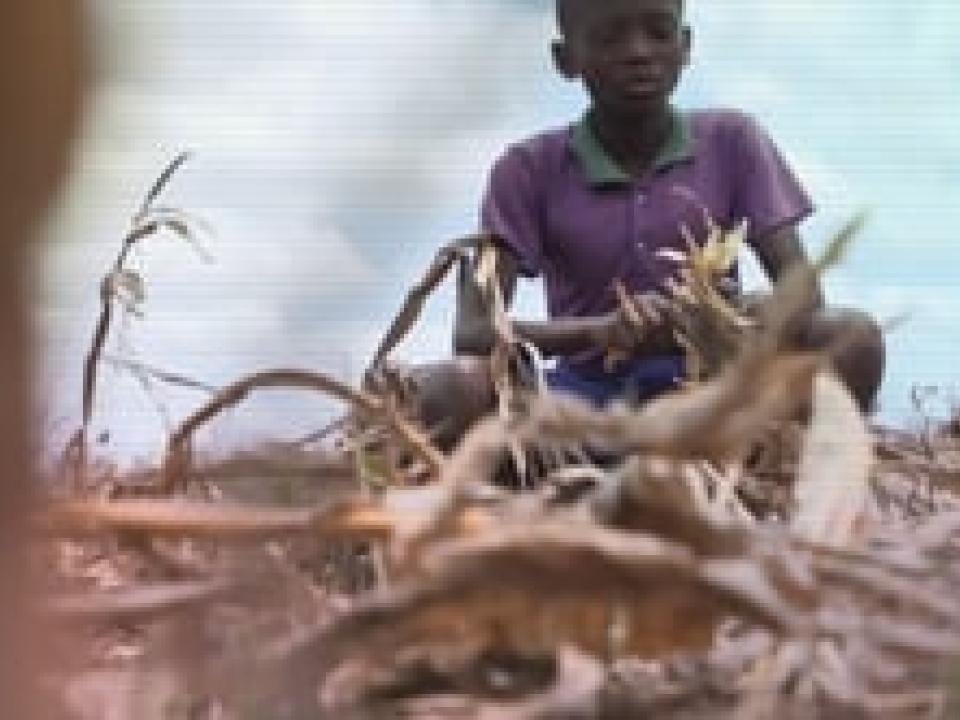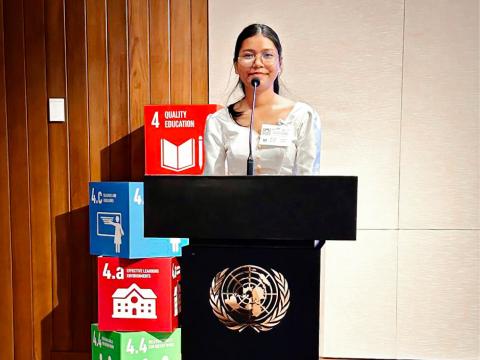
Why Children Need More Resilience Today - And How We Can Help Them Build It?
Natalia Korobkova warns that children face enough threats to their mental health without those in power making choices that make things worse.
Today, during a team well-being reflection at World Vision, we paused to talk about how we, as adults, are coping with the weight of uncertainty and shifting global landscapes. But even as we discussed our own resilience, I couldn’t stop thinking about the youngest among us - our children. Who is supporting them?
As a mother of two, I witness daily how the world’s stressors seep into their small, bright lives. My younger child, still in early primary school, returns home with questions that many adults struggle to answer - about war, climate change, politics, food safety, and social justice. Somehow, world news penetrates even the most innocent spaces.
And this isn’t just my home. My family is spread across India, Russia, Israel, Costa Rica, and the United States, and in every country, parents and caregivers are seeing the same thing: children absorbing adult worries before they’re ready, and asking for emotional tools we’ve only recently begun to build for ourselves.
The Legacy We Don’t Want to Pass Down
Growing up in the former Soviet Union, I often heard the phrase: “But we survived.” It was said with pride, a badge of honor worn by generations who had learned to suppress emotion, to muscle through adversity, and pretend that fear, sadness, or failure didn’t exist. It meant this: we survived without anyone paying attention to our inner world. No one asked how we were coping with stress, fear or sadness. Emotional conversations were rare. Resilience wasn’t something we were taught.
Now as an adult, I see that survival is not the same as thriving - and it’s certainly not a blueprint I want for our children.
Today’s generation faces a complexity that’s different from the past: information overload, emotional burnout, shrinking community support systems, rising instability, and a near-constant state of anxiety. Our children don’t just need to “make it through.” They need tools to understand what they’re feeling, process it in healthy ways, and build true resilience to bounce back with meaning and hope-because without that, no amount of external stability will be enough.
Why Resilience Matters More Than Ever
Through my work in humanitarian policy and advocacy, I’ve seen the devastating impact of fragile mental health, violence and food insecurity on children in crisis zones and disaster-prone regions. It is estimated that nearly 43 million children were displaced over six years by weather-related disasters. This number is on the rise.
Whether in war-affected communities, disaster-prone regions, or areas suffering from deep poverty, one thing is clear: without resilience, children struggle to heal, to hope, and to move forward.
What does resilience look like for children around the world?
In North America, resilience may look like schools that incorporate emotional literacy, mindfulness practices, and trauma-informed approaches—equipping children to navigate anxiety, bullying, and family stress.
In Costa Rica, where I’ve seen the beautiful ethos of pura vida - living life with simplicity, gratitude, and resilience - children are encouraged to stay connected to nature and community, vital sources of emotional grounding.
At World Vision, resilience is not a buzzword - it’s a fundamental component of how we support children’s well-being. From our work on Disaster Risk Management in the Myanmar to our spiritual and emotional healing programmes in Rwanda, we focus on helping children and communities not only prepare for hardship but also recover and thrive afterward.
How does our resilience approach translate for vulnerable children?
As a child-focused organisation, we use a holistic approach to building resilience in vulnerable children by addressing the root causes of their vulnerability and empowering families and communities. This includes promoting risk reduction education, strengthening livelihoods, fostering community-led solutions, and enhancing local institutions and infrastructure. We prioritise listening to children, supporting their education, and meeting immediate needs during crises—while also helping families break cycles of dependency and build sustainable futures. Through these efforts, World Vision enables children not just to survive adversity, but to thrive.
In Cambodia, it could be children’s groups in rural villages, where girls, like Yaru, learn to raise their voice and continue their education, despite cultural and economic pressures to drop out and become empowered youth leader and advocate against child violence.
In Rwanda and Uganda, World Vision integrates faith-based healing and emotional restoration into child-friendly spaces for those who have lived through war or displacement.
Across all these contexts, resilience isn’t just an abstract idea. It’s practical, teachable, and life-saving.
How we promote resilience at World Vision?
To ensure long-term well-being for children, World Vision programmes globally promote multiple layers of resilience:
- Disaster Risk Management (DRM): Teaching communities how to prepare for and respond to disasters, helping children feel safer and more in control. This is integrated through our Community-Based Disaster Risk Management (CBDRM) model.
- Environmental Stewardship: Helping families adapt to climate change through sustainable agriculture, natural resource management, and energy-efficient technologies—giving children a future they can believe in.
- Economic Resilience: We support caregivers to break cycles of poverty and reduce reliance on negative coping strategies, which translates to better health, education, and protection outcomes for children.
- Fostering Resilience across Sectors: Our health, WASH, education, and child protection initiatives are all designed with resilience in mind—strengthening families to withstand and adapt to change.
- Peacebuilding, Spiritual and Emotional Resilience: Through programmes like Empowered Worldview and Celebrating Families, we engage faith leaders and communities to support healing, hope, and a strong sense of purpose. Faith and spirituality can be powerful anchors for children facing adversity.
A Final Concern: The Cost of Distraction
As I look at rising militarization, increasing political and social polarisation, and looming economic crises, I worry that the investment in children’s mental health, nutrition, protection and resilience may be sidelined. When budgets tighten and attention shifts to defense or economic survival, it’s often children’s futures that become the first casualty.
But we cannot afford to neglect them. Building resilience in children is not just a moral imperative - it is an investment in the stability, peace, and flourishing of our world.
Let’s give our children more than just a hope to survive. Let’s give them the tools to thrive.
More information about World Vision’s holistic approach to resilience:
https://www.wvi.org/
More about World Vision’s statement on humanitarian aid funding
https://www.wvi.org/newsroom/world-vision-international-statement-humanitarian-aid-funding
By Natalia Korobkova, Director for Humanitarian Policy & Advocacy at World Vision, mother of two, global citizen, and advocate for children’s well-being.


